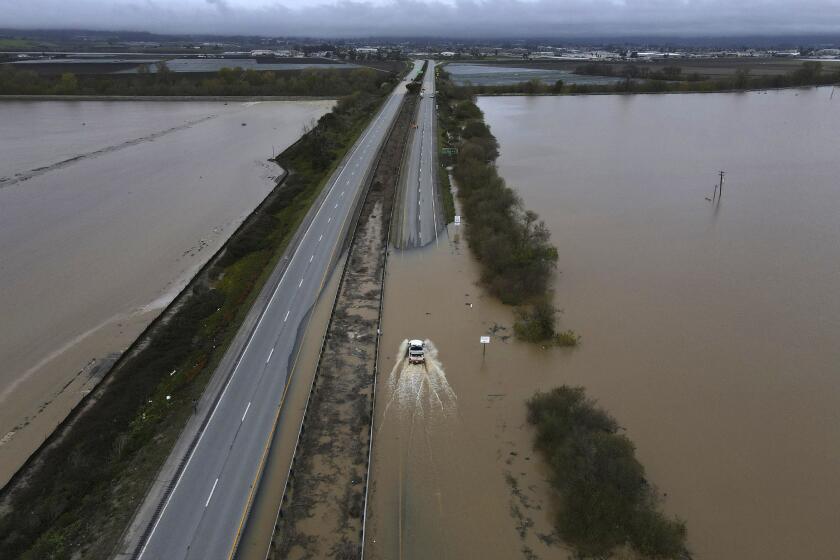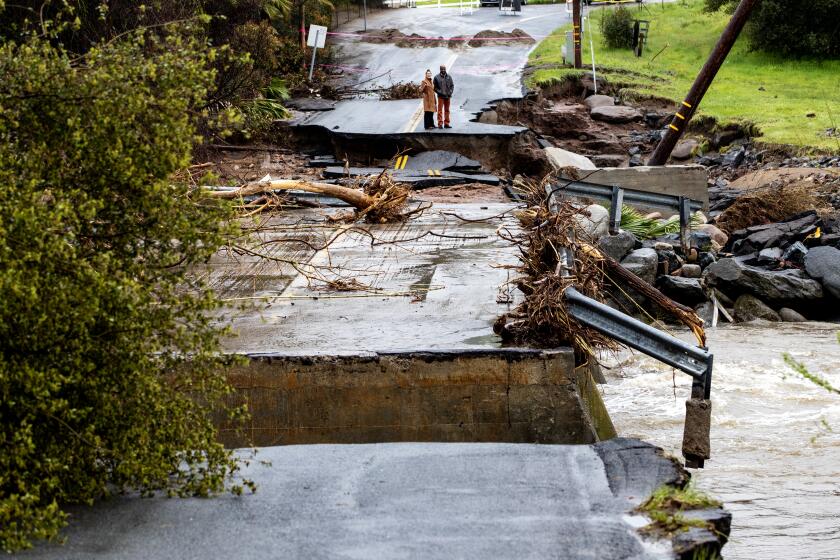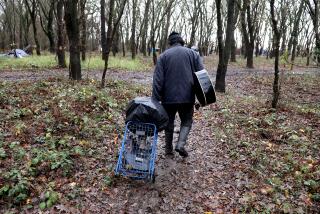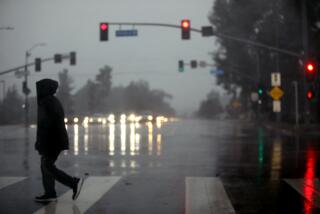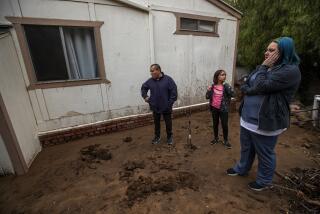Opinion: What happened in Pajaro isn’t just a ‘natural’ disaster
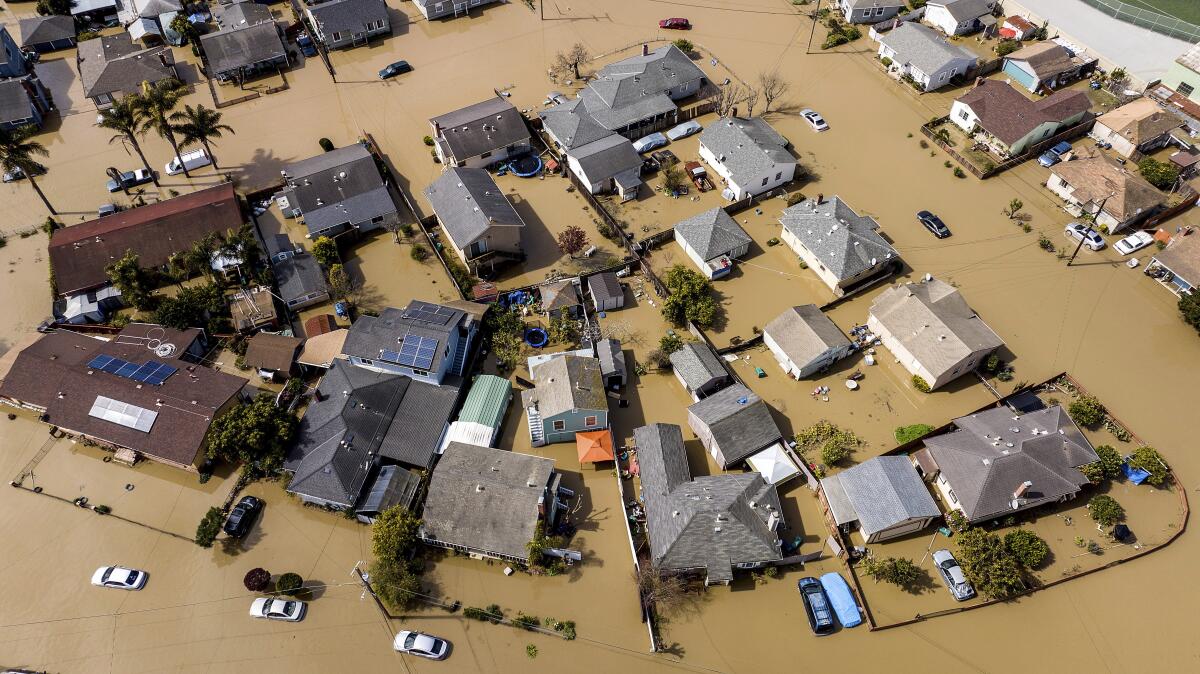
In the last few years, California has experienced extreme wildfires, heat waves and the ever-present COVID-19 pandemic. What has become abundantly clear, particularly from the ravages of the pandemic on low-income communities of color, is that disaster risk is not an equal-opportunity affair.
The latest evidence of this came this past weekend as the Pajaro River levee failed and flooded a small town populated mainly by migrant workers and their families. In an eerie coincidence, the levee failure occurred on March 12, 95 years to the day the St. Francis Dam catastrophically failed because of a defective foundation and other design flaws.
For years, experts had been warning Monterey and Santa Cruz County that the levee along the Pajaro River could fail.
The dam collapse triggered a massive flood in Los Angeles and Ventura counties that claimed the lives of nearly 500 people, many of them undocumented migrant farmworkers. It represents the second-greatest loss of life in California’s history, after the 1906 San Francisco earthquake and fire, and is still considered one of the worst civil engineering disasters in U.S. history.
Just as with the St. Francis Dam, the failure of the Pajaro levee was not totally a “natural” disaster. For decades, government officials have known that the levee was vulnerable yet never prioritized repairs largely because their cost-benefit analysis didn’t value the losses of a low-income town. As Stu Townsley of the U.S. Army Corps of Engineers told The Times over the weekend: “You get basically Bay Area construction costs but the value of property isn’t all that high.” A reassessment, taking equity into account, has been made, but obviously too late to prevent catastrophe.
The task now is not just to hold officials accountable for the poor decisions in planning that allowed for the levee breach but to ensure that relief and recovery is delivered equitably.
More than a dozen locations along major rivers were overflowing as the storm moved south across California. About 336,000 people were without power.
The relief effort during the aftermath of the St. Francis Dam failure provides an instructive lesson in getting it wrong. The Red Cross, for example, largely refused to provide treatment to Mexican flood victims; local government officials instead enlisted the assistance of La Cruz Azul de San Fernando, a local charity that provided Latino victims mutual aid in racially segregated shelters and offered interpreter-coordinated services. The city of Los Angeles, the operator of the St. Francis Dam, was later accused of providing Latino farmworkers with lower payouts to cover property loss and for funeral expenses.
This is not just some long-ago history. In our research on wildfires in Ventura, Santa Barbara and Sonoma counties from 2017 and 2020, we found that undocumented migrants were rendered invisible by cultural norms regarding who is deemed a worthy disaster victim. In interviews with victims and analysis of government data, a pattern appeared: Resources were directed toward wealthier individuals, leaving local immigrant rights groups to provide essential services such as language access to emergency information in Spanish and Indigenous dialects, labor protections for farmworkers threatened by heavy smoke, and establishing a disaster-relief fund for undocumented migrants ineligible for federal aid.
Given their marginalized social status, undocumented migrants are particularly vulnerable to disasters and require special consideration in disaster planning and response. They are adversely affected by racial discrimination, economic exploitation and hardship, fear of deportation and communication difficulties. According to a 2019 state auditor’s report, emergency officials routinely overlook the state’s most vulnerable populations as they make preparations for foreseeable wildfires, floods and other disasters.
The Pajaro River levee failure points to hazards that California has yet to address in many areas where communities are vulnerable, experts say.
Stronger protections are needed. For example, improved language access for emergency information; inclusive disaster and climate adaptation planning programs; disaster-planning funding for community-based migrant organizations; better occupational health and safety provisions; a permanent statewide disaster relief fund for undocumented immigrants to cover unemployment and medical costs, housing and property replacement, and hazard pay for those who work under dangerous conditions during a disaster.
Wildfires, heat waves, floods and pandemics do not discriminate. Nor are these disasters unanticipated, isolated phenomena. Disaster risk and disaster interventions are ultimately political in nature. As California experiences a rapid increase in the number and severity of challenges associated with our changing climate, we must embrace and engage all Californians, including those who may lack legal status, in preparing for a sustainable future. Addressing the crisis in Pajaro with an equitable and inclusive approach offers us the opportunity to get it right for current residents and for future generations.
Michael Méndez is an Andrew Carnegie fellow and assistant professor of environmental planning and policy at UC Irvine. Manuel Pastor is a professor of sociology and director of the Equity Research Institute at USC.
More to Read
A cure for the common opinion
Get thought-provoking perspectives with our weekly newsletter.
You may occasionally receive promotional content from the Los Angeles Times.
